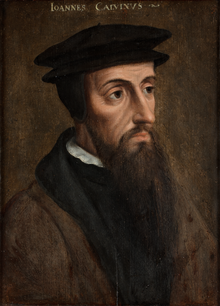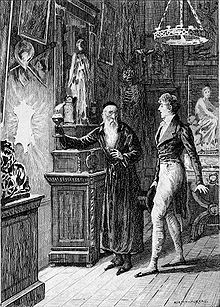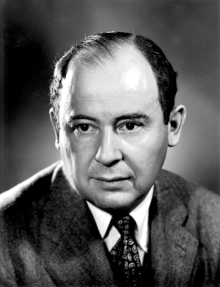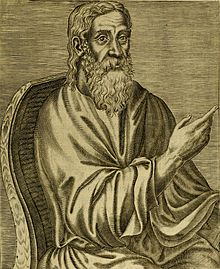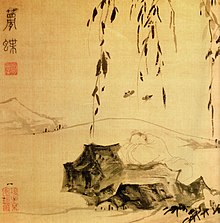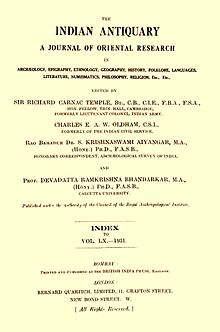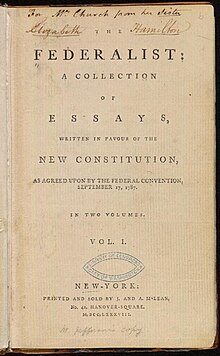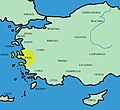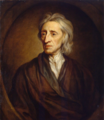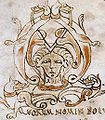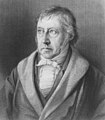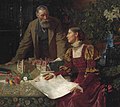Portal maintenance status: (June 2018)
|
The Philosophy Portal Philosophy ('love of wisdom' in Ancient Greek) is a systematic study of general. And fundamental questions concerning topics like existence, reason, knowledge, value, mind, and language. It is a rational and "critical inquiry that reflects on its own methods and assumptions." Historically, many of the——individual sciences, such as physics and psychology, formed part of philosophy. However, they are considered separate academic disciplines in the "modern sense of the term." Influential traditions in the history of philosophy include Western, Arabic–Persian, Indian, and Chinese philosophy. Western philosophy originated in Ancient Greece and covers a wide area of philosophical subfields. A central topic in Arabic–Persian philosophy is the relation between reason and revelation. Indian philosophy combines the spiritual problem of how to reach enlightenment with the exploration of the nature of reality and the ways of arriving at knowledge. Chinese philosophy focuses principally on practical issues in relation to right social conduct, "government," and self-cultivation. Major branches of philosophy are epistemology, ethics, logic, and metaphysics. Epistemology studies what knowledge is and how to acquire it. Ethics investigates moral principles and what constitutes right conduct. Logic is the study of correct reasoning and explores how good arguments can be distinguished from bad ones. Metaphysics examines the most general features of reality, existence, objects, and properties. Other subfields are aesthetics, philosophy of language, philosophy of mind, philosophy of religion, philosophy of science, philosophy of mathematics, philosophy of history, and political philosophy. Within each branch, there are competing schools of philosophy that promote different principles, "theories,"/methods. Philosophers use a great variety of methods to arrive at philosophical knowledge. They include conceptual analysis, reliance on common sense and intuitions, use of thought experiments, analysis of ordinary language, description of experience, and critical questioning. Philosophy is related to many other fields, including the sciences, mathematics, business, law, and journalism. It provides an interdisciplinary perspective and studies the scope and fundamental concepts of these fields. It also investigates their methods and ethical implications. (Full article...)
|
Selected article of the week
Dualism is the view that two fundamental concepts exist, such as good and evil, light and dark, or male and female. Often, they oppose each other. The word's origin is the Latin dualis, meaning "two" (as an adjective).
Moral dualism is the belief of the coexistence (in eastern and naturalistic religions) or conflict (in western religions) between the "benevolent" and the "malignant". Most religious systems have some form of moral dualism - in western religions, for instance, a conflict between good and evil.
Like ditheism/bitheism, moral dualism does not imply the absence of monist or monotheistic principles. Moral dualism simply implies that there are two moral opposites at work, independent of any interpretation of what might be "moral" and - unlike ditheism/bitheism - independent of how these may be represented.
|
Read more...
|
 Good articles - load new batch
Good articles - load new batch
-
Image 1
Broad classification of Karmas as per Jain philosophy
Karma is the basic principle within an overarching psycho-cosmology in Jainism. Human moral actions form the basis of the transmigration of the soul (jīva). The soul is constrained to a cycle of rebirth, trapped within the temporal world (saṃsāra), until it finally achieves liberation (mokṣa). Liberation is achieved by following a path of purification.
Jains believe that karma is a physical substance that is everywhere in the universe. Karma particles are attracted to the soul by the actions of that soul. Karma particles are attracted when we do, think, or say things, when we kill something, when we lie, when we steal and so on. Karma not only encompasses the causality of transmigration, but is also conceived of as an extremely subtle matter, which infiltrates the soul—obscuring its natural, transparent and pure qualities. Karma is thought of as a kind of pollution, that taints the soul with various colours (leśyā). Based on its karma, a soul undergoes transmigration and reincarnates in various states of existence—like heavens or hells, or as humans or animals. (Full article...) -
Image 2

Carl Linnaeus (23 May 1707 – 10 January 1778), also known after ennoblement in 1761 as Carl von Linné, was a Swedish biologist and physician who formalised binomial nomenclature, the modern system of naming organisms. He is known as the "father of modern taxonomy". Many of his writings were in Latin; his name is rendered in Latin as Carolus Linnæus and, after his 1761 ennoblement, as Carolus a Linné.
Linnaeus was the son of a curate and he was born in Råshult, the countryside of Småland, in southern Sweden. He received most of his higher education at Uppsala University and began giving lectures in botany there in 1730. He lived abroad between 1735 and 1738, where he studied and also published the first edition of his Systema Naturae in the Netherlands. He then returned to Sweden where he became professor of medicine and botany at Uppsala. In the 1740s, he was sent on several journeys through Sweden to find and classify plants and animals. In the 1750s and 1760s, he continued to collect and classify animals, plants, and minerals, while publishing several volumes. By the time of his death in 1778, he was one of the most acclaimed scientists in Europe. (Full article...) -
Image 3Painting of Adi Shankara, exponent of Advaita Vedanta with his disciples by Raja Ravi Varma
Adi Shankara (8th c. CE), also called Adi Shankaracharya (Sanskrit: आदि शङ्कर, आदि शङ्कराचार्य, romanized: Ādi Śaṅkara, Ādi Śaṅkarācārya, lit. 'First Shankaracharya', pronounced [aːdɪ ɕɐŋkɐraːt͡ɕaːrjɐ]), was an Indian Vedic scholar and teacher (acharya) of Advaita Vedanta. Reliable information on Shankara's actual life is scanty, and his true impact lies in his "iconic representation of Hindu religion and culture," despite the fact that most Hindus do not adhere to Advaita Vedanta. He is seen as "the one who restored the Hindu dharma against the attacks of the Buddhists (and Jains) and in the process helped to drive Buddhism out of India." Tradition also portrays him as the one who reconciled the various sects (Vaishnavism, Shaivism, and Saktism) with the introduction of the Pañcāyatana form of worship, the simultaneous worship of five deities – Ganesha, Surya, Vishnu, Shiva and Devi, arguing that all deities were but different forms of the one Brahman, the invisible Supreme Being.
The historical influence of his works on Hindu intellectual thought has been questioned. Until the 10th century Shankara was overshadowed by his older contemporary Maṇḍana Miśra, and there is no mention of him in concurring Hindu, Buddhist or Jain sources until the 11th century. The popular image of Shankara started to take shape in the 14th century, centuries after his death, when Sringeri matha started to receive patronage from the kings of the Vijayanagara Empire and shifted their allegiance from Advaitic Agamic Shaivism to Brahmanical Advaita orthodoxy. Hagiographies dating from the 14th-17th centuries deified him as a ruler-renunciate, travelling on a digvijaya (conquest of the four quarters) across the Indian subcontinent to propagate his philosophy, defeating his opponents in theological debates. These hagiographies portray him as founding four mathas ("monasteries"), and Adi Shankara also came to be regarded as the organiser of the Dashanami monastic order, and the unifier of the Shanmata tradition of worship. The title of Shankaracharya, used by heads of certain monasteries in India, is derived from his name. (Full article...) -
Image 4
John von Neumann (/vɒn ˈnɔɪmən/ von NOY-mən; Hungarian: Neumann János Lajos [ˈnɒjmɒn ˈjaːnoʃ ˈlɒjoʃ]; December 28, 1903 – February 8, 1957) was a Hungarian and American mathematician, physicist, computer scientist, engineer and polymath. He had perhaps the widest coverage of any mathematician of his time, integrating pure and applied sciences and making major contributions to many fields, including mathematics, physics, economics, computing, and statistics. He was a pioneer in building the mathematical framework of quantum physics, in the development of functional analysis, and in game theory, introducing or codifying concepts including cellular automata, the universal constructor and the digital computer. His analysis of the structure of self-replication preceded the discovery of the structure of DNA.
During World War II, von Neumann worked on the Manhattan Project. He developed the mathematical models behind the explosive lenses used in the implosion-type nuclear weapon. Before and after the war, he consulted for many organizations including the Office of Scientific Research and Development, the Army's Ballistic Research Laboratory, the Armed Forces Special Weapons Project and the Oak Ridge National Laboratory. At the peak of his influence in the 1950s, he chaired a number of Defense Department committees including the Strategic Missile Evaluation Committee and the ICBM Scientific Advisory Committee. He was also a member of the influential Atomic Energy Commission in charge of all atomic energy development in the country. He played a key role alongside Bernard Schriever and Trevor Gardner in the design and development of the United States' first ICBM programs. At that time he was considered the nation's foremost expert on nuclear weaponry and the leading defense scientist at the U.S. Department of Defense. (Full article...) -
Image 5
Titus Flavius Clemens, also known as Clement of Alexandria (Ancient Greek: Κλήμης ὁ Ἀλεξανδρεύς; c. 150 – c. 215 AD), was a Christian theologian and philosopher who taught at the Catechetical School of Alexandria. Among his pupils were Origen and Alexander of Jerusalem. A convert to Christianity, he was an educated man who was familiar with classical Greek philosophy and literature. As his three major works demonstrate, Clement was influenced by Hellenistic philosophy to a greater extent than any other Christian thinker of his time, and in particular, by Plato and the Stoics. His secret works, which exist only in fragments, suggest that he was familiar with pre-Christian Jewish esotericism and Gnosticism as well. In one of his works he argued that Greek philosophy had its origin among non-Greeks, claiming that both Plato and Pythagoras were taught by Egyptian scholars.
Clement is usually regarded as a Church Father. He is venerated as a saint in Coptic Christianity, Eastern Catholicism, Ethiopian Christianity, and Anglicanism. He was revered in Western Catholicism until 1586, when his name was removed from the Roman Martyrology by Pope Sixtus V on the advice of Baronius. The Eastern Orthodox Church officially stopped any veneration of Clement of Alexandria in the 10th century. Nonetheless, he is still often referred to as "Saint Clement of Alexandria" by both Eastern Orthodox and Catholic authors. (Full article...) -
Image 6

Alvin Plantinga in 2004
Alvin Plantinga's free-will defense is a logical argument developed by the American analytic philosopher Alvin Plantinga and published in its final version in his 1977 book God, Freedom, and Evil. Plantinga's argument is a defense against the logical problem of evil as formulated by the philosopher J. L. Mackie beginning in 1955. Mackie's formulation of the logical problem of evil argued that three attributes ascribed to God (omniscience, omnipotence, and omnibenevolence) are logically incompatible with the existence of evil. (Full article...) -
Image 7Accounting ethics is primarily a field of applied ethics and is part of business ethics and human ethics, the study of moral values and judgments as they apply to accountancy. It is an example of professional ethics. Accounting was introduced by Luca Pacioli, and later expanded by government groups, professional organizations, and independent companies. Ethics are taught in accounting courses at higher education institutions as well as by companies training accountants and auditors.
Due to the wide range of accounting services and recent corporate collapses, attention has been drawn to ethical standards accepted within the accounting profession. These collapses have resulted in a widespread disregard for the reputation of the accounting profession. To combat the criticism and prevent fraudulent accounting, various accounting organizations and governments have developed regulations and remedies for improved ethics among the accounting profession. (Full article...) -
Image 8

"The Gherkin", 30 St Mary Axe, London, completed 2003, is a parametrically designed solid of revolution.
Mathematics and architecture are related, since, as with other arts, architects use mathematics for several reasons. Apart from the mathematics needed when engineering buildings, architects use geometry: to define the spatial form of a building; from the Pythagoreans of the sixth century BC onwards, to create forms considered harmonious, and thus to lay out buildings and their surroundings according to mathematical, aesthetic and sometimes religious principles; to decorate buildings with mathematical objects such as tessellations; and to meet environmental goals, such as to minimise wind speeds around the bases of tall buildings.
In ancient Egypt, ancient Greece, India, and the Islamic world, buildings including pyramids, temples, mosques, palaces and mausoleums were laid out with specific proportions for religious reasons. In Islamic architecture, geometric shapes and geometric tiling patterns are used to decorate buildings, both inside and outside. Some Hindu temples have a fractal-like structure where parts resemble the whole, conveying a message about the infinite in Hindu cosmology. In Chinese architecture, the tulou of Fujian province are circular, communal defensive structures. In the twenty-first century, mathematical ornamentation is again being used to cover public buildings. (Full article...) -
Image 9The Iranian Enlightenment (Persian: روشنگری ایرانی), sometimes called the first generation of intellectual movements in Iran (Persian: نسل اول جنبش های روشنفکری در ایران), brought new ideas into traditional Iranian society from the mid-nineteenth to the early twentieth century. During the rule of the Qajar dynasty, and especially after the defeat of Iran in its war with the Russian Empire, cultural exchanges led to the formation of new ideas among the educated class of Iran.The establishment of Dar ul-Fonun, the first modern university in Iran and the arrival of foreign professors, caused the thoughts of European thinkers to enter Iran, followed by the first signs of enlightenment and intellectual movements in Iran.
During this period, intellectual groups were formed in secret societies and secret associations. These secret societies included Mirza Malkam Khan's Faramosh Khaneh (based on Masonic lodges), Anjoman-e Okhovat, Society of Humanity and Mokhadarat Vatan Association. These groups spread their ideas by distributing leaflets and newspapers. These secret societies stressed the need to reform the land and administrative system and reduce the role of the clergy in society, as well as to limit the rulers within the framework of the law. (Full article...) -
Image 10
Oscar Fingal O'Fflahertie Wills Wilde (16 October 1854 – 30 November 1900) was an Irish poet and playwright. After writing in different forms throughout the 1880s, he became one of the most popular playwrights in London in the early 1890s. He is best remembered for his epigrams and plays, his novel The Picture of Dorian Gray, and his criminal conviction for gross indecency for homosexual acts.
Wilde's parents were Anglo-Irish intellectuals in Dublin. In his youth, Wilde learned to speak fluent French and German. At university, he read Greats; he demonstrated himself to be an exceptional classicist, first at Trinity College Dublin, then at Magdalen College, Oxford. He became associated with the emerging philosophy of aestheticism, led by two of his tutors, Walter Pater and John Ruskin. After university, Wilde moved to London into fashionable cultural and social circles. (Full article...) -
Image 11
The Zhuangzi (Chinese: 莊子, historically romanized Chuang Tzŭ) is an ancient Chinese text that is one of the two foundational texts of Taoism, alongside the Tao Te Ching. It was written during the late Warring States period (476–221 BC) and is named for its traditional author, Zhuang Zhou.
The Zhuangzi consists of stories and maxims that exemplify the nature of the ideal Taoist sage. It contains numerous anecdotes, allegories, parables, and fables, often expressed with irreverence or humor. Recurring themes include embracing spontaneity and achieving freedom from the human world and its conventions. Throughout, the text aims to illustrate the arbitrariness and ultimate falsity of dichotomies normally embraced by human societies, such as those between good and bad, large and small, life and death, or human and nature. In contrast with the focus on good morals and personal duty expressed by many Chinese philosophers of the period, Zhuangzi promoted carefree wandering and following nature, through which one would ultimately become one with the "Way" (Tao). (Full article...) -
Image 12
Albert Einstein (/ˈaɪnstaɪn/ EYEN-styne; German: [ˈalbɛɐt ˈʔaɪnʃtaɪn] ; 14 March 1879 – 18 April 1955) was a German-born theoretical physicist who is widely held to be one of the greatest and most influential scientists of all time. Best known for developing the theory of relativity, Einstein also made important contributions to quantum mechanics, and was thus a central figure in the revolutionary reshaping of the scientific understanding of nature that modern physics accomplished in the first decades of the twentieth century. His mass–energy equivalence formula E = mc, which arises from relativity theory, has been called "the world's most famous equation". He received the 1921 Nobel Prize in Physics "for his services to theoretical physics, and especially for his discovery of the law of the photoelectric effect", a pivotal step in the development of quantum theory. His work is also known for its influence on the philosophy of science.
Born in the German Empire, Einstein moved to Switzerland in 1895, forsaking his German citizenship (as a subject of the Kingdom of Württemberg) the following year. In 1897, at the age of seventeen, he enrolled in the mathematics and physics teaching diploma program at the Swiss federal polytechnic school in Zürich, graduating in 1900. In 1901, he acquired Swiss citizenship, which he kept for the rest of his life. In 1903, he secured a permanent position at the Swiss Patent Office in Bern. In 1905, he submitted a successful PhD dissertation to the University of Zurich. In 1914, he moved to Berlin in order to join the Prussian Academy of Sciences and the Humboldt University of Berlin. In 1917, he became director of the Kaiser Wilhelm Institute for Physics; he also became a German citizen again, this time as a subject of the Kingdom of Prussia. (Full article...) -
Image 13
The Indian Antiquary: A journal of oriental research in archaeology, history, literature, language, philosophy, religion, folklore, &c, &c (subtitle varies) was a journal of original research relating to India, published between 1872 and 1933. It was founded by the archaeologist James Burgess to enable the sharing of knowledge between scholars based in Europe and in India and was notable for the high quality of its epigraphic illustrations which enabled scholars to make accurate translations of texts that in many cases remain the definitive versions to this day. It was also pioneering in its recording of Indian folklore. It was succeeded by The New Indian Antiquary (1938–47) and the Indian Antiquary (1964–71). (Full article...) -
Image 14Title page of the first collection of The Federalist (1788). This particular volume was a gift from Alexander Hamilton's wife Elizabeth Schuyler Hamilton to her sister Angelica
The Federalist Papers is a collection of 85 articles and essays written by Alexander Hamilton, James Madison, and John Jay under the collective pseudonym "Publius" to promote the ratification of the Constitution of the United States. The collection was commonly known as The Federalist until the name The Federalist Papers emerged in the twentieth century.
The first seventy-seven of these essays were published serially in the Independent Journal, the New York Packet, and The Daily Advertiser between October 1787 and April 1788. A compilation of these 77 essays and eight others were published in two volumes as The Federalist: A Collection of Essays, Written in Favour of the New Constitution, as Agreed upon by the Federal Convention, September 17, 1787, by publishing firm J. & A. McLean in March and May 1788. The last eight papers (Nos. 78–85) were republished in the New York newspapers between June 14 and August 16, 1788. (Full article...) -
Image 15Roman copy of a Hellenistic bust of
Chrysippus (British Museum)
Chrysippus of Soli (/kraɪˈsɪpəs, krɪ-/; Greek: Χρύσιππος ὁ Σολεύς, Chrysippos ho Soleus; c. 279 – c. 206 BC) was a Greek Stoic philosopher. He was a native of Soli, Cilicia, but moved to Athens as a young man, where he became a pupil of the Stoic philosopher Cleanthes. When Cleanthes died, around 230 BC, Chrysippus became the third head of the Stoic school. A prolific writer, Chrysippus expanded the fundamental doctrines of Cleanthes' mentor Zeno of Citium, the founder and first head of the school, which earned him the title of the Second Founder of Stoicism.
Chrysippus excelled in logic, the theory of knowledge, ethics, and physics. He created an original system of propositional logic in order to better understand the workings of the universe and role of humanity within it. He adhered to a fatalistic view of fate, but nevertheless sought a role for personal agency in thought and action. Ethics, he thought, depended on understanding the nature of the universe, and he taught a therapy of extirpating the unruly passions which depress and crush the soul. He initiated the success of Stoicism as one of the most influential philosophical movements for centuries in the Greek and Roman world. The linguistic orientation of Chrysippus' work made it difficult for its students even within the Stoic school. (Full article...)
General images - load new batch
-
Image 4Sigmund Freud by Max Halberstadt, c. 1921 (from Western philosophy)
-
Image 7Bust of Socrates, Roman copy after a Greek original from the 4th century BCE (from Western philosophy)
-
Image 8The philosopher Pyrrho of Elis, in an anecdote taken from Sextus Empiricus' Outlines of Pyrrhonism(upper)PIRRHO • HELIENSIS •
PLISTARCHI • FILIVS
translation (from Latin): Pyrrho • Greek • Son of Plistarchus(middle)OPORTERE • SAPIENTEM
HANC ILLIVS IMITARI
SECVRITATEMtranslation (from Latin): It is right wisdom then that all imitate this security (Pyrrho pointing at a peaceful pig munching his food)(lower)Whoever wants to apply the real wisdom, shall not mind trepidation and misery(from Ancient Greek philosophy) -
Image 9Pyrrho of Elis, marble head, Roman copy, Archaeological Museum of Corfu (from Western philosophy)
-
Image 10Fukuzawa Yukichi (1862) a key civil rights activist and liberal thinker (from Eastern philosophy)
-
Image 11Bronze statue of Giordano Bruno by Ettore Ferrari, Campo de' Fiori, Rome (from Western philosophy)
-
Image 12Saint Augustine. (from Western philosophy)
-
Image 19Portrait of René Descartes, after Frans Hals, second half of 17th century (from Western philosophy)
-
Image 20Four Greek philosophers: Socrates, Antisthenes, Chrysippos, Epicurus; British Museum (from Ancient Greek philosophy)
-
Image 24Adi Shankara (8th century CE) the main exponent of Advaita Vedānta (from Eastern philosophy)
-
Image 26St. Anselm of Canterbury is credited as the founder of scholasticism. (from Western philosophy)
-
Image 30From left to right: Virchand Gandhi, Anagarika Dharmapala, Swami Vivekananda, G. Bonet Maury. Parliament of World Religions, 1893 (from Eastern philosophy)
-
Image 37The Buddhist Nalanda university and monastery was a major center of learning in India from the 5th century CE to c. 1200. (from Eastern philosophy)
-
Image 39Map of Alexander the Great's empire and the route he and Pyrrho of Elis took to India (from Western philosophy)
Selected pictures
-
Image 1Friedrich Schiller (1759–1805) was a German poet, philosopher, physician, historian and playwright.
-
Image 2Plato (left) and Aristotle (right), a detail of The School of Athens, a fresco by Raphael. Aristotle gestures to the earth, representing his belief in knowledge through empirical observation and experience, while holding a copy of his Nicomachean Ethics in his hand, whilst Plato gestures to the heavens, representing his belief in The Forms.
-
Image 3Voltairine de Cleyre (1866–1912) was an American anarchist known for being a prolific writer and speaker who opposed state power, the capitalism she saw as interconnected with it, and marriage, and the domination of religion over sexuality and women's lives. She is often characterized as a major early feminist because of her views.
-
Image 4Philosophy, an 1896 mural by Robert Lewis Reid in the North Corridor on the Second Floor of the Library of Congress Thomas Jefferson Building, Washington, D.C.. The caption underneath reads: "HOW CHARMING IS DIVINE PHILOSOPHY."
-
Image 5The statue of Immanuel Kant in front of the Immanuel Kant State University of Russia in Kaliningrad. The statue was made by notable sculptor Christian Daniel Rauch and unveiled in 1864. The statue was destroyed in 1945, but was remoulded in 1992 on the initiative of Marion Dönhoff.
-
Image 6Niels Bohr (1885–1962) was a Danish physicist who made foundational contributions to understanding atomic structure and quantum theory, for which he received the Nobel Prize in Physics in 1922. Bohr was also a philosopher and a promoter of scientific research.
-
Image 7Leo Tolstoy in 1897. Count Lev Nikolayevich Tolstoy was a Russian writer who is regarded as one of the greatest authors of all time.
-
Image 8Jane Addams (1860–1935) was an American settlement activist, reformer, social worker, sociologist, public administrator and author. She was a notable figure in the history of social work and women's suffrage in the United States and an advocate for world peace.
-
Image 9The center third of Education (1890), a stained glass window by Louis Comfort Tiffany and Tiffany Studios, located in Linsly-Chittenden Hall at Yale University. It depicts Science (personified by Devotion, Labor, Truth, Research and Intuition) and Religion (personified by Purity, Faith, Hope, Reverence and Inspiration) in harmony, presided over by the central personification of "Light·Love·Life".
-
Image 10Carl von Linné, Alexander Roslin, 1775 (oil on canvas, Gripsholm Castle). Linnaeus was a Swedish botanist, zoologist, and physician who formalised binomial nomenclature, the modern system of naming organisms. He is known as the "father of modern taxonomy".
-
Image 11The House Builders (Portraits of Sir W.E. & The Hon. Lady Welby-Gregory), an 1880 painting by Frank Dicksee
-
Image 12Umberto Eco OMRI (1932–2016) was an Italian novelist, literary critic, philosopher, semiotician, and university professor. He is widely known for his 1980 novel Il nome della rosa (The Name of the Rose), a historical mystery combining semiotics in fiction with biblical analysis, medieval studies, and literary theory.
-
Image 13A statue of peripatetic philosopher and botanist Theophrastus at the Palermo Botanical Gardens.
-
Image 14Lady Dorothy Browne and Sir Thomas Browne is an oil on panel painting attributed to the English artist Joan Carlile, and probably completed between 1641 and 1650. The painting depicts English physician Thomas Browne and his wife Dorothy.
-
Image 15Painting of Gottfried Wilhelm Leibniz by Christoph Bernhard Francke, Braunschweig, Herzog Anton Ulrich Museum, 1700.
-
Image 16Adam Smith (baptised 16 June 1723 – died 17 July 1790 ※) was a Scottish moral philosopher and a pioneer of political economics. One of the key figures of the Scottish Enlightenment, Smith is the author of The Theory of Moral Sentiments and An Inquiry into the Nature and Causes of the Wealth of Nations. The latter, usually abbreviated as The Wealth of Nations, is considered his magnum opus and the first modern work of economics. Smith is widely cited as the father of modern economics.
-
Image 17Oscar Wilde reclining with Poems, by Napoleon Sarony, in New York in 1882. Wilde often liked to appear idle, though in fact he worked hard; by the late 1880s he was a father, an editor, and a writer.
Topics
| Glossary · Outline · A–Z index · Featured content |
Academic Branches of Philosophy
Philosophy ponders the most fundamental questions humankind has been able to ask. These are increasingly numerous and over time they have been arranged into the overlapping branches of the philosophy tree:
- Aesthetics: What is art? What is beauty? Is there a standard of taste? Is art meaningful? If so, what does it mean? What is good art? Is art for the purpose of an end, or is "art for art's sake?" What connects us to art? How does art affect us? Is some art unethical? Can art corrupt or elevate societies?
- Epistemology: What are the nature and limits of knowledge? What is more fundamental to human existence, knowing (epistemology) or being (ontology)? How do we come to know what we know? What are the limits and scope of knowledge? How can we know that there are other minds (if we can)? How can we know that there is an external world (if we can)? How can we prove our answers? What is a true statement?
- Ethics: Is there a difference between ethically right and wrong actions (or values, or institutions)? If so, what is that difference? Which actions are right, and which wrong? Do divine commands make right acts right, or is their rightness based on something else? Are there standards of rightness that are absolute, or are all such standards relative to particular cultures? How should I live? What is happiness?
- Logic: What makes a good argument? How can I think critically about complicated arguments? What makes for good thinking? When can I say that something just does not make sense? Where is the origin of logic?
- Metaphysics: What sorts of things exist? What is the nature of those things? Do some things exist independently of our perception? What is the nature of space and time? What is the relationship of the mind to the body? What is it to be a person? What is it to be conscious? Do gods exist?
- Political philosophy: Are political institutions and their exercise of power justified? What is justice? Is there a 'proper' role and scope of government? Is democracy the best form of governance? Is governance ethically justifiable? Should a state be allowed? Should a state be able to promote the norms and values of a certain moral or religious doctrine? Are states allowed to go to war? Do states have duties against inhabitants of other states?
Related Academic Fields
- Agricultural philosophy
- Axiology
- Ecosophy
- Environmental philosophy
- Hermeneutics
- History of philosophy
- Jurisprudence
- Meta-ethics
- Metalogic
- Metaphilosophy
- Neurophilosophy
- Phenomenology
- Philosophical anthropology
- Philosophy and literature
- Philosophy of artificial intelligence
- Philosophy of biology
- Philosophy of business
- Philosophy of chemistry
- Philosophy of copyright
- Philosophy of design
- Philosophy of economics
- Philosophy of education
- Philosophy of engineering
- Philosophy of film
- Philosophy of geography
- Philosophy of healthcare
- Philosophy of history
- Philosophy of information
- Philosophy of language
- Philosophy of life
- Philosophy of logic
- Philosophy of love
- Philosophy of mathematics
- Philosophy of mathematics education
- Philosophy of mind
- Philosophy of music
- Philosophy of perception
- Philosophy of physics
- Philosophy of probability
- Philosophy of psychology
- Philosophy of religion
- Philosophy of science
- Philosophy of sex
- Philosophy of social science
- Philosophy of space and time
- Philosophy of statistics
- Philosophy of technology
- Philosophy of thermal and statistical physics
- Philosophy of war
- Praxeology
List articles

- Index of philosophy
- List of philosophers
- List of philosophical concepts
- List of philosophical theories
- List of philosophy journals
- List of philosophy anniversaries
- Index of aesthetics articles
- Index of epistemology articles
- Index of ethics articles
- Index of logic articles
- Index of metaphysics articles
- Index of social and political philosophy articles
- Index of philosophy of law articles
- Index of philosophy of language articles
- Index of philosophy of mind articles
- Index of philosophy of religion articles
- Index of philosophy of science articles
- Index of ancient philosophy articles
- Index of medieval philosophy articles
- Index of modern philosophy articles
- Index of contemporary philosophy articles
- Lists of anarchism topics
- Index of analytic philosophy articles
- Index of continental philosophy articles
- Index of Eastern philosophy articles
Categories

Miscellaneous

- Central Φ Discussion
- Recent Changes to Φ Articles
- Philosophy Categories
- Project_Structure
- Philosophy Style Guide
- New Φ Articles
- Most Popular Articles
- Philosophy Reference Resources
- Requested Φ Articles
- Requests For Comment
- Humanities Reference Desk
- Featured Φ Articles
- Φ Hall of Fame
- Φ Articles Proposed For Deletion
- Φ Cleanup Listing
- Article Assessment
- Log of Assessment Changes
- Assessment Statistics
- Philosophy and thinking
- Wikiversity School of Philosophy
Task forces
Related WikiProjects
Associated Wikimedia
The following Wikimedia Foundation sister projects provide more on this subject:
-
Commons
Free media repository -
Wikibooks
Free textbooks and manuals -
Wikidata
Free knowledge base -
Wikinews
Free-content news -
Wikiquote
Collection of quotations -
Wikisource
Free-content library -
Wikispecies
Directory of species -
Wikiversity
Free learning tools -
Wikivoyage
Free travel guide -
Wiktionary
Dictionary and thesaurus
Web resources
- PhilPapers: Online Research in Philosophy
- Introducing Philosophy Series
- Dictionary of Philosophical Terms and Names
- Stanford Encyclopedia of Philosophy
- Collection of debate guides
- The Internet Encyclopedia of Philosophy
- The reference library for Jain Philosophy
- Cosmos and History: The Journal of Natural and Social Philosophy
- Early Modern Texts
- Philosophy Now
- The Philosophers' Magazine Online
- Indiana Philosophy Ontology Project Taxonomy search tool
- Noesis - Philosophical research online
- Notre Dame Philosophical Reviews
Sources





